SPRING 2024

pg. 10 GREAT LAKES TUNNEL PROJECT
CELEBRATING 45 YEARS AT THE WATERSHED COUNCIL IN THIS ISSUE
A publication
to inform and educate about the importance of protecting our lakes, streams, wetlands, and groundwater.
LOOKING BACK, MOVING FORWARD
pg. 6 NEW! WATERSHED DISCOVERY CENTER pg. 9 VOLUNTEER STREAM MONITORING PROGRAM pg. 5 BEBOT — THE BEACH CLEANING ROBOT
Former Water Resources Program Director Scott McEwen surveys a Northern Michigan river. Circa 1997.
WATERSHED COUNCIL STAFF
Kim Baker INTERIM MANAGER
Kory Alaniz OPERATIONS SPECIALIST
Eli Baker EDUCATION MANAGER
Calla Beers
WATER RESOURCES & COMMUNICATIONS SPECIALIST
Lauren Dey
ASSOCIATE DIRECTOR
Andrea Coronado
COMMUNICATIONS & DEVELOPMENT DIRECTOR
Marcella Domka
WATER RESOURCES MANAGER
Michele Howard FINANCE DIRECTOR
Noah Jansen RESTORATION MANAGER
Emily Johnson
WATER RESOURCES SPECIALIST
Anna McGlashen
LOCAL POLICY MANAGER
Jennifer McKay
CHIEF POLICY & GOVERNMENT AFFAIRS DIRECTOR
Natalie Walts OFFICE MANAGER
Anna Watson WATER RESOURCES SPECIALIST
WATERSHED COUNCIL BOARD OF DIRECTORS
Tom Darnton PRESIDENT
Chuck Kneese
VICE PRESIDENT
Scott Davis TREASURER
Perry Irish Hodgson
SECRETARY
Linda Adams
Brian Hayes
Mike Hayes
Jerry Huey
Mary Beth Kazanski
Bob Kingon
Ana Schwab
Karie Slavik
Mike Supernault
Greg Walz
Amanda Weinert
GET IN TOUCH
426 Bay St, Petoskey, MI 49770
Monday - Friday 8:30 a.m.- 5 p.m. (231) 347-1181
info@watershedcouncil.org watershedcouncil.org
MEMBERS OF:


Looking Back, Moving Forward

Like many of you, I’m curious about history. I focused on ancient history at Hope College and was an archaeologist for two summers in the Middle East during graduate school.
My brother, a retired surgeon living downstate, has been exploring our family’s ancestry. Our great grandfather, Klaas Bakker—a young Dutch seafarer from the northern province of Friesland—was once shipwrecked off the west coast of Russia. He immigrated to the United States in 1882. Matthijs Van Oostenbrugge, another great grandfather, left Rotterdam in 1891 onboard the SS Spaarndam with his wife Aagtje and their seven children. They were bound for Hoboken, New Jersey, seeking a new life in a new world.
We learn a lot from history. It helps us understand our own identity. It helps us learn from the past and understand other cultures. It also helps us more readily welcome change in the future.
This year marks the 45th Anniversary of Tip of the Mitt Watershed Council. It’s an anniversary for celebration and reflection, and a call to move forward with renewed confidence and optimism.
LOOKING BACK
1982 The Little Traverse Conservancy awards a $5,000 grant to the Watershed Council to hire a part-time director—our first was Nancy Jarvis, followed by Carol Magee a year later. Four student interns are brought on to begin water-quality monitoring.
1984 Jim Bricker (a limnologist), Tom Lagerstrom (a fundraiser), and Gail Gruenwald (a legal consultant/office manager) begin several decades of progressive growth in Watershed Council membership and in its mission. Gruenwald became our full-time executive director that year, serving 37 years, retiring in 2021.

1985 The Watershed Council receives its first program grant—$43,000 from the C.S. Mott Foundation for wetlands protection—launching our ongoing efforts for shoreline restoration, protection, and public policy.
1987 The Watershed Council begins its Water Monitoring Program—initially collecting data at 10 of our larger lakes. Today, we collect samples from 29 lakes.

1979 Lake Associations in Cheboygan, Charlevoix, and Emmet Counties, with the assistance of the University of Michigan Biological Station on Douglas Lake, form the Watershed Council. Its mission—to protect the water resources of the region.
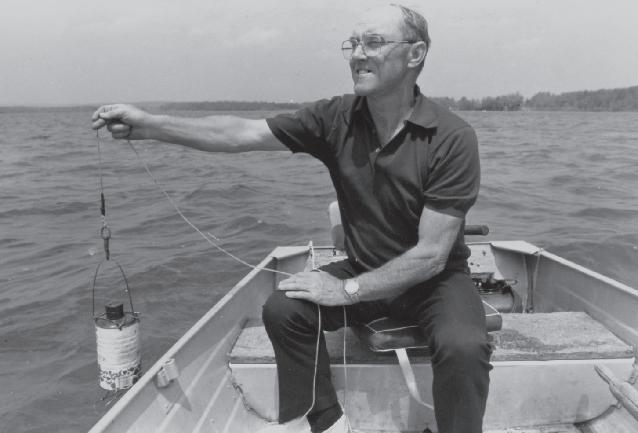

DIVE INTO THE FASCINATING WORLD OF WATERSHEDS WITH OUR “WATERSHEDS AT WORK” PODCAST!
as he dives into the
shedding light on crucial
and
more.
or
Join host Kory Alaniz
intricate workings of watersheds,
environmental issues through thought-provoking discussions, and tackling subjects that matter—like watershed management, water quality, wildlife preservation,
many
Listen on Spotify
find them on our website!
2
1995 The Watershed Council and the Lake Charlevoix Association partner to welcome elementary students aboard the Beaver Islander for hands-on experiments relating to water quality, invasive species, and water safety. In 2023, “Students Experience Lake Charlevoix” hosted nearly 200 enthusiastic fifth graders.

2005 The Watershed Council’s Volunteer Stream Monitoring Program begins. Each spring and fall, volunteers collect water samples and macroinvertebrates which help indicate long-term trends and overall aquatic health. Today, monitors gather data at 25 streams.
2015 Tip of the Mitt Watershed Academy is launched. The current program engages science students from 13 Northern Michigan high schools in activities centered around their own local watershed—growing the next generation of water stewards.

2023 Work on the Black Lake Watershed Management Plan begins. Once completed, the Watershed Council will have six comprehensive, EPA/EGLEapproved plans that identify specific threats to water resources, along with practical recommendations to address each issue.
MOVING FORWARD
In this issue of Current Reflections, you’ll see plans for the Ruth Tucker Ayers Harris Watershed Discovery Center. You’ll hear about BeBot, our eco-friendly beach cleaning robot which will make appearances at local beaches this summer. And you’ll read about other ways we’re looking after our waterways.
It’s been rewarding to be your Interim Manager this past year. I will miss working with the staff—each, a top-notch individual.
For me, I’ll be returning to retirement aboard Shamal, my 1966 Pearson Vanguard sloop.
And now, let me introduce you to Heather Huffstutler, our new executive director. Heather will take the helm on Monday, April 8, inaugurating an exciting new era for the organization.
Kim Baker Interim Manager
A WARM WELCOME TO HEATHER HUFFSTUTLER
AN EXCITING NEW ERA FOR THE ORGANIZATION

After an extensive search process, the Board of Directors of Tip of the Mitt Watershed Council chose Heather Huffstutler as its new executive director.
"I'm thrilled to become part of the leadership team at the Watershed Council and to learn from our stellar staff team that stewards our region's natural resources
every day," says Huffstutler. “Together, along with our community partners throughout Northern Michigan, we’ll grow our commitment to protect our waterways and woodlands.”
The selection process was led by Watershed Council Board President, Tom Darnton, who appointed a five-person team last fall to work with a top recruiting firm to conduct a national search for its new leader. According to Darnton, that process was “deep and thorough,” resulting in the invitation to three qualified candidates to Petoskey in February for a “day of immersion” with the entire staff and several board members. “After reviewing written assessments of each candidate, a clear consensus emerged. Heather stood out as offering the right combination of nonprofit experience and a life-long passion for our mission. And she was the best fit for our staff culture,” notes Darnton.
Huffstutler spent her career focusing on conservation, land protection, and the environment—including five years as the Director of Conservation Programs at Walloon Lake Trust and Conservancy. In 2019, she joined the staff at Huron Pines in Gaylord, Michigan, as its Director of Land Protection and Director of Development. Huffstutler has a BS in Biology from Eastern Michigan University and is currently enrolled in Indiana University’s Lilly School of Fundraising.
“I have been enthralled with the natural world since childhood—running around the shores and through the forests of the Pacific Northwest. After working in Vermont, Minnesota, and North Dakota, I returned to Northern Michigan to make it my home,” says Huffstutler. “You can often find me on the water in my kayak, or exploring new trails with my dog, Emmet.”
3
REMEMBERING MARK PADDOCK
Mark Paddock, a long-time passionate conservationist, who was instrumental in the formation of Tip of the Mitt Watershed Council, passed away on March 12, 2024. He helped launch the nonprofit, now one of the leading organizations protecting Northern Michigan’s water resources, from his cabin in 1975.
According to Art Gold, Ph.D., Professor Emeritus at the University of Rhode Island, and head of Project CLEAR (Community Lakes Environmental Action Research), "Since 1972, Mark was driven by a recognition that science, targeted at a local scale, could power locallydriven stewardship. He was instrumental in generating the Biological Station’s National Science Foundation grant project that generated a wealth of information on the lakes and watersheds that are now part of Tip of the Mitt Watershed Council. As the project came to a close, Mark recruited a team of graduate and undergraduate students (Project CLEAR) to translate data and scientific insights into action. He empowered enthusiastic students to listen to local organizations, initiate new programs, celebrate successes, and promote shared learning. Out of those efforts, the Watershed Council emerged.”
“I met Mark 40 years ago when I first started at the Watershed Council”, said Gail Gruenwald, prior executive director of Tip of the Mitt Watershed Council. “I was so young and inexperienced. Mark patiently taught me the history of the organization and the importance of the partnership with the Biostation. There hasn’t been a day in all those years that Mark’s voice and leadership didn’t guide my work protecting Northern Michigan’s water resources. I will miss him greatly.”
Born and raised in Iowa, Paddock went to college at the University of Colorado where he also worked as a summer park ranger.
While in graduate school at Colorado, Mark worked for the Institute of Arctic and Alpine Research both on the Boulder campus and at its field station, Mountain Research Station. He served as the chief of operations and facilities at the Mountain Research Station.
In 1965 he and his family moved to St. Louis to work at the Missouri Botanical Garden. He co-founded the St. Louis Coalition for the Environment and partnered with The Nature Conservancy
and others to add additional parcels to the organization’s 1,600-acre Arboretum. Thanks to his vision and collaborative work, in 1972 the U.S. Secretary of the Interior designated the Arboretum a National Environmental Education Landmark.
He next moved to Northern Michigan, where he remained for the rest of his life.
“Mark was intensely interested in Northern Michigan’s environment and its residents,” said Doug Fuller prior Watershed Council staff, board member, and dear friend to Paddock. “He had that rare talent of being good at science; understanding issues; and relating to, motivating, and guiding people. Our waters, lands, and lives are better for his having been a part of our community. And, he was a super-nice guy as evidenced by his hundreds of friends and admirers.”


Gold continued, “Mark never sought the spotlight. He preferred to listen and provide suggestions in small groups. We all respected his thoughts and guidance. His humble approach to engaged science, community building, and environmental stewardship generated unrivaled outcomes. The many successes of Tip of the Mitt Watershed Council represent an important part of Mark’s legacy. We were so fortunate to have him in our professional and personal lives for so many decades. Truly one of a kind.”
Paddock served as associate director at the University of Michigan Biological Station (UMBS) from 1971 to 1991. After retirement, Paddock remained involved with local conservation efforts through board memberships at the Tip of the Mitt Watershed Council, the Little Traverse Conservancy, and the Douglas Lake Improvement Association.
“Mark influenced and cared for many people and places, and he encouraged others to do the same,” said Karie Slavik, Associate Director of the University of Michigan Biological Station and Tip of the Mitt Watershed Council Board Member. “As Associate Director of the UM Biological Station, Mark initiated research and educational programs that have lasting impacts on students’ lives, organizations, and Northern Michigan communities more than 50 years later. He had a gift for coaxing the best from each of us as we pursued our own missions."

“Despite needing the assistance of a driver and a cane to help get around, Paddock remained engaged with the Watershed Council until recently,” said Jennifer McKay, chief policy and governmental affairs director at the Watershed Council. “He continued to attend meetings and presentations in his continuous desire for knowledge. At the same time, he was able to impart his extensive experience and wisdom to younger generations, improving the programs and operations at the Watershed Council. His leadership and guidance will be greatly missed.”
Mark Paddock during his tenure as UMBS associate director from 1971-91.
Mark Paddock visiting the Mark and Ruth Paddock Trail named in his honor November 2023.
4
Left to right: Knute Naddelhoffer, Mark Paddock, Kieran Fleming, Gail Gruenwald
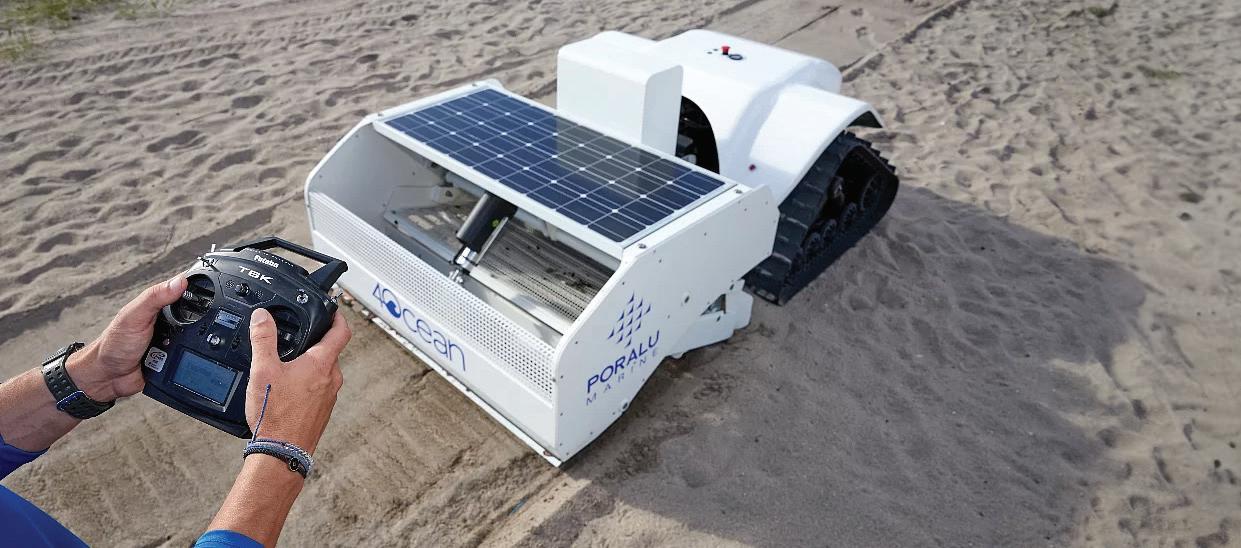
MEET BEBOT!
COMING SOON TO A BEACH NEAR YOU
An estimated 22 million pounds of plastic enter the Great Lakes each year, half of which ends up in Lake Michigan, according to calculations by the Rochester Institute of Technology.
To begin combating plastic pollution, the Watershed Council will deploy BeBot on Northern Michigan beaches this summer. BeBot is a remote-controlled beach-cleaning robot that has a cleaning capacity of 32,000 square feet per hour,

roughly the size of 7 basketball courts! The zero-emission solar and battery powered robot rakes through sand without making changes to the beach environment, collecting plastic litter and other waste. Things like bottles, cans, food wrappers and cigarette butts are gathered in a basket for disposal and recycling.
BeBot is part of the expansion of the Great Lakes Plastic Cleanup Program led by the Council of Great Lakes Region.


SPRING CLEANING
DON’T OVERLOOK YOUR MEDICINE CABINET!
It's that time of year—time for spring cleaning. While we tend to focus on tidying up closets and clearing out clutter, one area we often overlook is our medicine cabinets. Just like we purge old clothes and unused items, it's essential to dispose of expired and unwanted medications regularly and properly.
While flushing unused medications down the toilet or sink has been a common practice for years, the practice contributes to contaminants entering our lakes, rivers, streams, and groundwater, and poses risks to aquatic life and our drinking water quality.
Moreover, leftover drugs stored in home medicine cabinets can easily get into the wrong hands. Prescription drugs contribute to overdose deaths surpassing motor vehicle crashes as the leading cause of injury and death in the United States.

The POD Program offers a solution by providing safe disposal options for unwanted over-the-counter and prescription drugs medications. By participating in POD events or utilizing permanent POD Boxes in Northern Michigan, you can easily and responsibly dispose of medications.
Mark your calendar for our next POD Community Collection Event on Saturday, April 13 from 9 a.m. – 1 p.m. at the McLaren Northern Michigan Petoskey Campus.

For the location of permanent POD Boxes located at law enforcement agencies throughout Northern Michigan, visit pillsinthepod.com.
5
Coming Soon!


Interactive iSandBOX
IN MEMORY OF RUTH TUCKER AYERS HARRIS
Ruth Tucker Ayers Harris, a 38-yearmember of the Watershed Council, passed away on December 27, 2021. As a watercolor artist and conservationist, Ruth loved nature—everything about it. She enjoyed bird watching and woodland hikes until the last weeks of her life. During her life, she gave Northern Michigan a nature preserve in her family’s name for young and old to explore. Upon her death, Ruth left a bequest to the Watershed Council to help ensure the future health of our waterways. We are proud to name the Watershed Discovery Center in her honor.
WATERSHED DISCOVERY CENTER
This year, the Watershed Council celebrates 45 years of protecting and restoring our cherished rivers, lakes, and streams. To celebrate, we’re transforming our downtown Petoskey location into an immersive experience for students, community members, and visitors to learn about water resources in Northern Michigan—The Ruth Tucker Ayers Harris Watershed Discovery Center!
At the Watershed Discovery Center, visitors will explore themes such as plastic pollution, shoreline erosion and restoration efforts, stormwater runoff, septic systems, native species conservation, aquatic invasive species, and how macroinvertebrates help the Watershed Council determine the health or our waters—teaching visitors how everyone can make a positive impact on their own watershed.
Two, 150-gallon aquatic tanks will feature native fish species. And, in collaboration with the Little Traverse Bay Bands of Odawa Indians Fisheries Enhancement Facility, a juvenile sturgeon will be raised and released annually, educating visitors on conservation and the restoration of native species in our waterways.

Macroinvertebrate Touch Tank
An interactive macroinvertebrate "touch tank" will allow visitors to engage directly with aquatic life, promoting a hands-on learning experience. And an iSandBOX will provide a sensory experience combined with augmented reality technology to manipulate sand and create roads, rivers, lakes, and other local topography, demonstrating how watersheds work.
Opening this summer, The Ruth Tucker Ayers Harris Watershed Discovery Center will be free and open to the public business days 10 a.m. - 4 p.m. and select Saturdays in the summer months. Guided K-12 school and small-group tours will be available beginning in the fall.
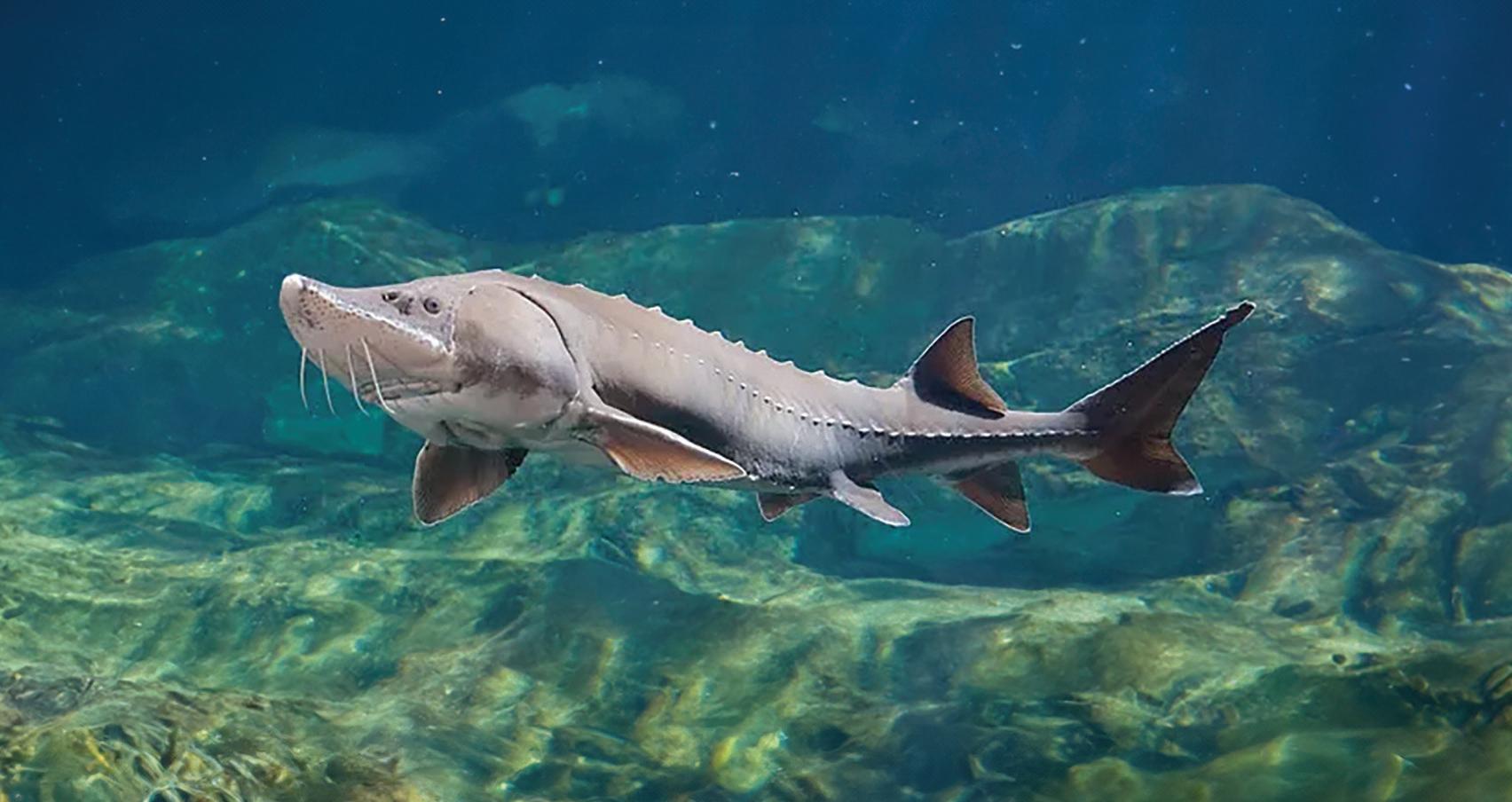
THE RUTH TUCKER AYERS HARRIS
6


7
Shown above are the renderings for The Ruth Tucker Ayers Harris Watershed Discovery Center—a transformative space dedicated to water resource education in Northern Michigan. The Discovery Center is designed to engage visitors in a hands-on exploration of plastic pollution, shoreline restoration, native species conservation, and more. Dive into the heart of watershed conservation at our downtown Petoskey location, where learning meets innovation to protect and restore our cherished rivers, lakes, and streams.
SEAS STUDENTS STUDY BLACK LAKE
In the eastern reaches of our service area lies the pristine Black Lake Watershed, offering abundant outdoor recreational opportunities. Yet in recent years, Black Lake has been the site of harmful algal blooms (HABs). HABs can produce toxins that present a risk to people, animals, aquatic ecosystems, and more. HABs are a widespread issue across the nation and have become increasingly prevalent in the waters of Black Lake, which has endured HABs in three of the past five summers.
To better understand if nonpoint source pollution is causing these blooms, the Watershed Council partnered with the University of Michigan’s School of Environment and Sustainability (SEAS) to conduct extensive field surveys on nonpoint source pollution in the watershed. The Black Lake Watershed Protection Team, comprised of Master’s students Bailey Greene, Dana Pflughoeft, Andrea Behrmann, and Maria Di Cresce, closely collaborated with affected communities to identify potential pollutants contributing to the HABs.
Over the past year and a half, these students worked diligently with the Watershed Council to lay the groundwork for the Black Lake Watershed
Management Plan. Through surveys and field research, they collected both qualitative and quantitative data to assess environmental conditions and identify potential sources of excess nutrients that may contribute to the presence of HABs within the Black Lake Watershed. They surveyed stakeholders, residents, and local officials, shedding light on awareness, attitudes, and behaviors related to watershed health. An intensive three weeks of field research during summer 2023 produced inventories of the common contributors to nonpoint source pollution which include road/stream crossings, streambank erosion, agricultural land use, and forestry activity.
The insights gleaned from their efforts will be integrated into the final Black Lake Watershed Management Plan by the Watershed Council. While awaiting the plan's completion, the Black Lake community will leverage the students' recommendations to guide efforts aimed at improving watershed health. These recommendations will also serve as a valuable resource for other communities grappling with similar challenges.
This project serves as the capstone for the students' graduate degrees,

showcasing their dedication and expertise in environmental management. We extend our gratitude to Andrea, Maria, Dana, and Bailey for their contributions and invite you to join us in celebrating their achievements. You can attend their final presentation virtually on April 18 or access the recording afterward. Their comprehensive report will also be available on our website.
Funding for this work was provided by the Watershed Council, Black Lake Association, Bev Haas, Carroll Haas Foundation, Black Lake Preservation Society, and the Michigan Department of Environment, Great Lakes, and Energy.
CASTING A BETTER FUTURE FOR THE CHEBOYGAN RIVER
In the heart of the downtown Cheboygan, the Cheboygan River teems with prized catches like steelhead salmon, rainbow trout, walleye, bass, and sunfish. But accessing this popular fishing spot has been challenging due to overcrowding and limited accessibility. After years of careful planning and community collaboration, a project was developed to

enhance accessibility and safeguard the river's beauty.
Since 2018, Tip of the Mitt Watershed Council has been working with Cheboygan stakeholders to address access and water quality concerns. With funding from the Great Lakes Fishery Trust and the Michigan Department of Natural Resources, we worked with landscape architect Sanders and Czapski to design improvements along the river adjacent to the popular children’s trail.
These designs proposed the construction of seven illuminated fishing platforms connected by a boardwalk, totaling nearly 800 linear feet. These platforms, accommodating anglers of all abilities, aim to reduce erosion, enhance safety, and provide unparalleled access to the river's
bounty while preserving its ecological balance. Equipped with concrete steps for easy netting and wading, these platforms harmonize with the riverbank's contours, blending seamlessly with nature.
Two platforms have been built, with funding secured from the Michigan Department of Natural Resources to construct the five remaining fishing piers in the coming years. Last fall, an interpretive sign showcasing the river's diverse fish species, designed by Right Side Design Group, was installed by the Watershed Council.
With these accessibility improvements, anglers can eagerly anticipate “reeling in a big one” and enjoying more fishing excursions along the Cheboygan River in the near future.
8
Left to right: SEAS Students Maria Di Cresce, Dana Pflughoeft, Andrea Behrmann, Bailey Greene
MULLETT AREA PRESERVATION SOCIETY DIVES INTO SALT CONTAMINATION
When temperatures drop, communities rely on road salting to maintain safe conditions during icy winter weather. However, the inadvertent contamination of water resources with road salt has become a growing concern in Northern Michigan. The issue of excessive chloride runoff from road salts and de-icing solutions into our streams, rivers, and lakes has sparked action from local organizations.

The Mullett Lake Area Preservation Society (MAPS) took the initiative to address this concern by approaching the Watershed Council. Their aim was to find out whether Mullett Lake and its connecting waters were affected by chloride contamination. Beginning in the fall of 2023, a collaborative effort between Watershed Council staff and MAPS volunteers was initiated to get some answers.
A comprehensive plan was established with detailed protocols for the collection of water samples. It involved conducting sampling within a narrow timeframe of 24 hours following a rain event, targeting specific locations known as stormwater outfalls. Outfalls channel stormwater runoff, carrying contaminants and excess nutrients into nearby water bodies. By collecting data immediately after significant rain events (.5 inches of rainfall over 24 hours), outfalls are flush with runoff and Watershed Council staff can more accurately identify traces of chloride.
Sample collection occurs in Indian River, a direct outflow of Mullett Lake. Chloride levels in water samples are determined using Hach® chloride strips. These test strips are dipped into collected samples, allowing for easy observation of chloride contamination.
Fall sampling efforts have been completed by MAPS volunteers, with spring sampling currently in progress. Seasonal sampling is crucial for collecting comprehensive data, as chloride levels in Indian River may fluctuate due to factors such as spring snowmelt and summer brine (salt water) application.

The collection of chloride data will allow both the Watershed Council and MAPS to assess the extent of chloride contamination in the Mullett Lake Watershed. Armed with this data, both groups will collaborate on proactive measures to mitigate salt contamination including road salt outreach and education, consultations with county road commissioners to explore best management practices, and the adoption of environmentally friendly de-icing alternatives.
As always, the Watershed Council, alongside MAPS, remains dedicated to safeguarding and restoring the precious water resources of Northern Michigan.
Marcella Domka Water Resources Manager
In partnership with Mullett Lake Area Preservation Society
CELEBRATING 20 YEARS OF VOLUNTEER STREAM MONITORING
This year, the Watershed Council celebrates another milestone—20 years of our Volunteer Stream Monitoring (VSM) program!
The VSM program began in 2005 with just a handful of volunteers and seven streams. Today, nearly 100 volunteers monitor 27 sites on 18 streams in the spring and fall.
Volunteers are trained and equipped by Watershed Council staff before venturing out into the field where they collect aquatic insects and other macroinvertebrates from Northern Michigan’s streams for identification. Macroinvertebrates are key indicators of water quality and stream ecosystem health. Mayflies, stoneflies,

and caddisflies are highly sensitive to environmental change and pollution.
When identification is completed on the collected samples, a numeric score is generated based on the number and types of macroinvertebrate families found. The greater the biological diversity found at the site, the healthier the stream ecosystem!
You can help us celebrate 20 years of stream monitoring by becoming a Volunteer Stream Monitor in 2024. Join us for our VSM spring training on Saturday, April 27. We are especially looking for volunteers to join our Little Black River and Eliot Creek teams in Cheboygan.


If you are interested in volunteering, contact Anna Watson, Water Resource Specialist, at (231) 489-7274.
STREAM MONITORING IN 2023-2024
Berry Creek
Black River
Boyne River
Deer Creek
Horton Creek
Maple River
Milligan Creek
Pigeon River
Springbrook Creek

Rainy River
Wilkinson Creek
Minnehaha Creek
Bear River
Bessey Creek
Mullett Creek
Stover Creek
Russian Creek
Schoof’s Creek

9
THE WATERSHED COUNCIL HEADS TO WASHINGTON, D.C.
Every spring, the Watershed Council joins hundreds of advocates from across the Great Lakes Basin in Washington D.C. for Great Lakes Day. We meet with federal officials and Michigan’s Congressional delegation to inform and educate them on priorities for the Great Lakes.
In addition to representing our members, the Watershed Council also serves as an alternate Great Lakes Commissioner appointed by Gov. Whitmer, and as a governance board member for Healing Our Waters–Great Lakes Coalition.
The Great Lakes Commission represents eight U.S. states and two Canadian provinces that recommend policies and practices to balance the use, development, and conservation of the water resources of the Great Lakes.
The Healing Our Waters-Great Lakes Coalition’s mission is to secure a sustainable Great Lakes restoration plan and the federal funding for its implementation.
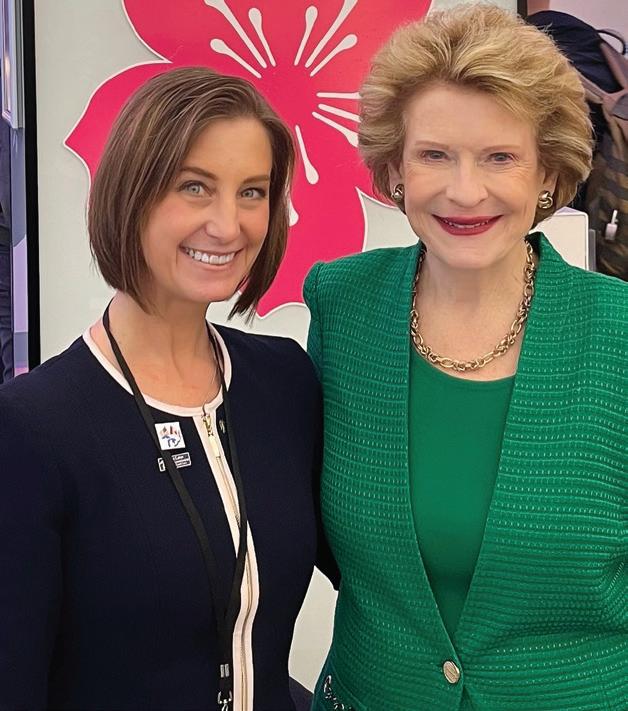
2024 GREAT LAKES PRIORITIES INCLUDE:
• Funding Great Lakes restoration and supporting the Great Lakes Restoration Initiative.
• Restoring and strengthening clean water protections—including emerging contaminants, lead line removal, and key Farm Bill programs related to water quality, sustainable agriculture, wetland protection, and rural development.
• Investing in water infrastructure and ensuring equitable implementation.
• Protecting climate action and investments.
WATERSHED COUNCIL APPEALS DECISION ON ENBRIDGE GREAT LAKES TUNNEL PROJECT
On December 1, 2023, the Michigan Public Service Commission (MPSC) approved the application for Enbridge Energy to replace the existing dual Line 5 pipelines in the Straits of Mackinac with a tunnel underneath the bottomlands of the Great Lakes. As a result, the Watershed Council, along with partners National Wildlife Federation and Michigan Environmental Council, filed an appeal on the decision to protect our water resources from not only Line 5, but other proposals that pose a risk to Michigan’s magnificent waters in the future.

The Watershed Council continues to work toward a goal of no transportation of crude oil in, on, or under the Great Lakes. Simply replacing the Straits portion of Line 5 ultimately fails to eliminate the risk to the Great Lakes and Michigan’ public trust waters as inland portions which cross 400 waterbodies remain.
“Whether it’s on or under the lakebed, Line 5 is the gravest threat facing the water, wildlife, and way of life of people throughout Michigan and the Great Lakes. This decision is discouraging, and it does not reflect the reality that Line 5 is an unnecessary and reckless risk that Michigan, other Great Lakes states, and Canada can ill afford,” said Beth Wallace, Great Lakes freshwater campaigns manager for the National Wildlife Federation.

“Our Great Lakes are an international treasure. That’s what makes the recent Line 5 ruling more disappointing: it puts a dangerous oil pipeline ahead of something irreplaceable. But we have hope, because the fight’s far from over, and we have clean water organizations and tribal leaders to make sure of that. We are honored to work with them in appealing this recent ruling and in protecting such a unique and vital part of the environment,” said Ross Gavin, urban land use, water infrastructure and transportation policy director at the Michigan Environmental Council.
Furthermore, there are significant administrative errors and concerns about how the MPSC handled the Great Lakes Tunnel application. For the sake of our waters and all who rely on them, it is imperative that government processes be conducted in a proper and transparent way where all voices hold equal value, and participation is not impeded or obstructed by administrative procedures.
How this case was conducted could influence future cases and decisions and, therefore, needed to be administered with due care and the utmost precision to achieve an accurate and equitable outcome. We do not believe this to be the case.
Four Michigan tribes and other environmental organizations are also appealing the state’s decision. It is worthwhile to note that the tunnel project still needs a federal permit from the U.S. Army Corps of Engineers. A decision on that is expected in 2026.
Jennifer McKay Chief Policy and Government Affairs Director
10
Chief Policy and Government Affairs Director Jennifer McKay meets with Michigan Senator Debbie Stabenow, an unwavering champion of the Great Lakes and supporter of the Great Lakes Restoration Initiative.
DOLE FAMILY FOUNDATION PROVIDES RESOURCES TO IMPROVE ANTRIM COUNTY’S WATERS
Thanks to generous funding from the Dole Family Foundation, the Watershed Council recently purchased equipment and supplies that will enhance the protection of water resources throughout Antrim County and our entire service area.
Two new microscopes will allow volunteers and students to “zoom in” on tiny macroinvertebrates, giving them a close-up look at the snails, insects, and crayfish that—once identified—indicate the health of our streams.
With the addition of these microscopes, local experts trained in macroinvertebrate identification will be able to confirm identifications, record scientific names, and count specimens to determine water quality. This data helps decision-makers manage their streams.
Volunteers won’t be the only ones utilizing the new microscopes. High-school students in our Watershed Academy will
dive into a real-world field classroom by digging up critters first-hand and learning about the macroinvertebrates that live right in their own watershed!
In addition to the microscopes, the funding enabled the purchase of a new POD (Prescription and Over-the-Counter Drug Drop-Off) box for the Central Lake Police Department—providing Antrim County residents with another option to safely dispose of prescription, over-thecounter pharmaceuticals, and personal care products for free. By using the POD Box and properly disposing of unwanted medications, residents can help keep our rivers and drinking water clean and our communities and families safe.
The new POD Box is located at the Central Lake Police Department located at 1622 N M-88 in Central Lake. The POD Box is available MondayThursday during normal business hours, or any time an officer is onsite. For other POD Box locations throughout Northern Michigan, visit pillsinthepod.com.
AFTER-SCHOOL EDUCATION PROGRAM LAUNCHES AT PELLSTON ELEMENTARY

We’re excited to announce the launch of a new pilot program designed to provide enriching after-school education for students in grades K-5 at Pellston Elementary School. Building upon the success of our Watershed Academy, this program aims to immerse students in the fascinating aquatic world unique to Northern Michigan.
Our after-school program offers a captivating exploration of the natural environment—from the tiny world of macroinvertebrates to the expansive concept of watersheds. Led by our experienced education staff, students will explore our watershed model and create their own mini-watersheds to understand how water flows and interacts with the environment.
Through hands-on crafting, fun games, and scientific experiments, students will not only learn about their



watershed, but will develop a deep appreciation for our water resources and the environment. "We want to empower students with an understanding of how they can play a role in protecting our water resources," shares Eli Baker, education manager at the Watershed Council.
The pilot program kicked-off at Pellston Elementary School in March 2024, with a vision to expand our reach to more schools in the region in the coming year.
11
SAVE the DATE

Earth Week Plus Expo
April 20, 10am – 2pm Cheboygan Area Public Library
Join the Watershed Council at the Earth Week Plus Expo for a great line up of free, family-friendly activities to increase education and awareness about environmental issues. The Earth Week Plus Expo celebrates the earth and all its creatures with hands-on workshops, displays, make-and-take crafts, and more.
June 21 – 23 | Clean Waters Challenge
June 4 | Linking Lakes
August 20 | Annual Meeting
COST SHARE FUNDING FOR SHORELINE GREENBELTS

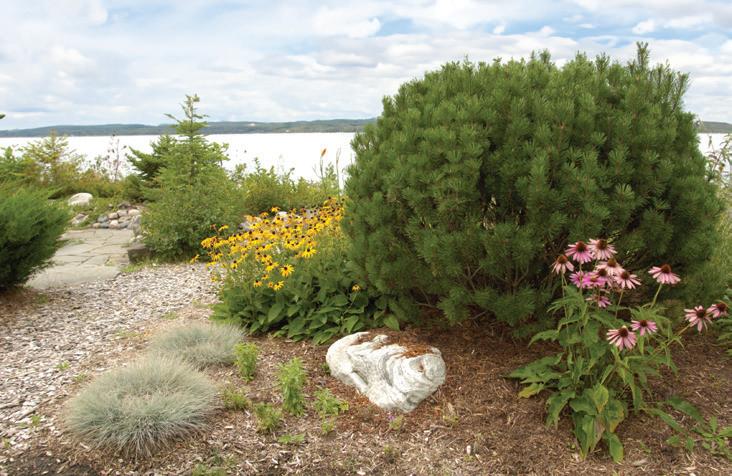
NOW AVAILABLE!
Shoreline greenbelts are nature's defense mechanism against erosion and pollution. These bands of native vegetation, including trees, shrubs, grasses, and wildflowers, not only stabilize the soil but also filter out harmful nutrients and pollution, safeguarding our precious water bodies. Plus, they provide a haven for songbirds and pollinators while deterring unwanted guests like geese!
Worried about aesthetics? Greenbelts can be tailored to suit both formal and informal styles. Leave open areas for easy access to the water, and with careful plant selection and pruning, you can maintain your breathtaking views.
Residents along Burt, Douglas, Crooked, or Pickerel Lakes can apply for cost-share funding to turn your greenbelt dreams into reality. Receive up to 50 percent coverage on project costs, up to $2,000!

Space is limited. Apply now at watershedcouncil.org/greenbeltcostshare or scan the QR code to the left. Act fast—priority goes to applications received by May 31.
The greenbelt cost share program has been funded wholly or in part through the Michigan Department of the Environment, Great Lakes, and Energy’s Nonpoint Source Program by the United States Environmental Protection Agency.
426 Bay Street Petoskey, MI 49770 ADDRESS SERVICE REQUESTED Non-Profit Org. USPS Mktg. Mail Petoskey, MI Permit No. 108
Photo Credit: Larry Tracy














































